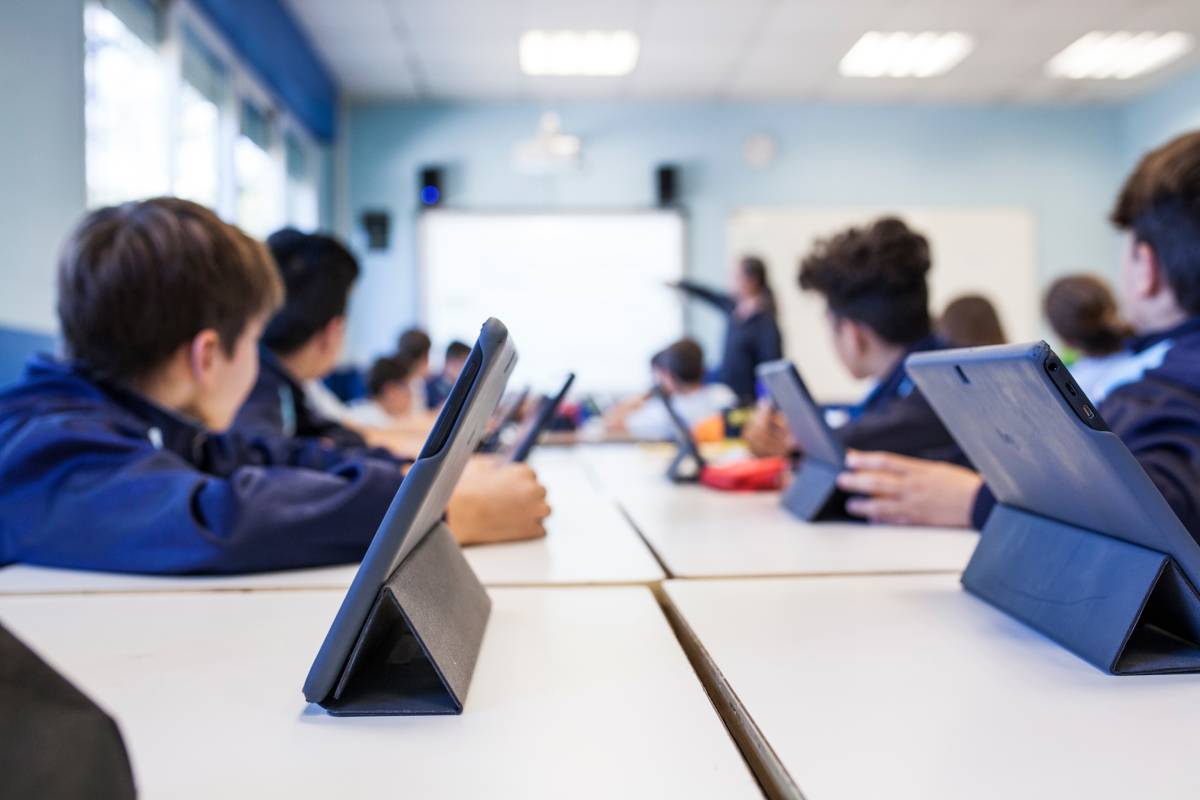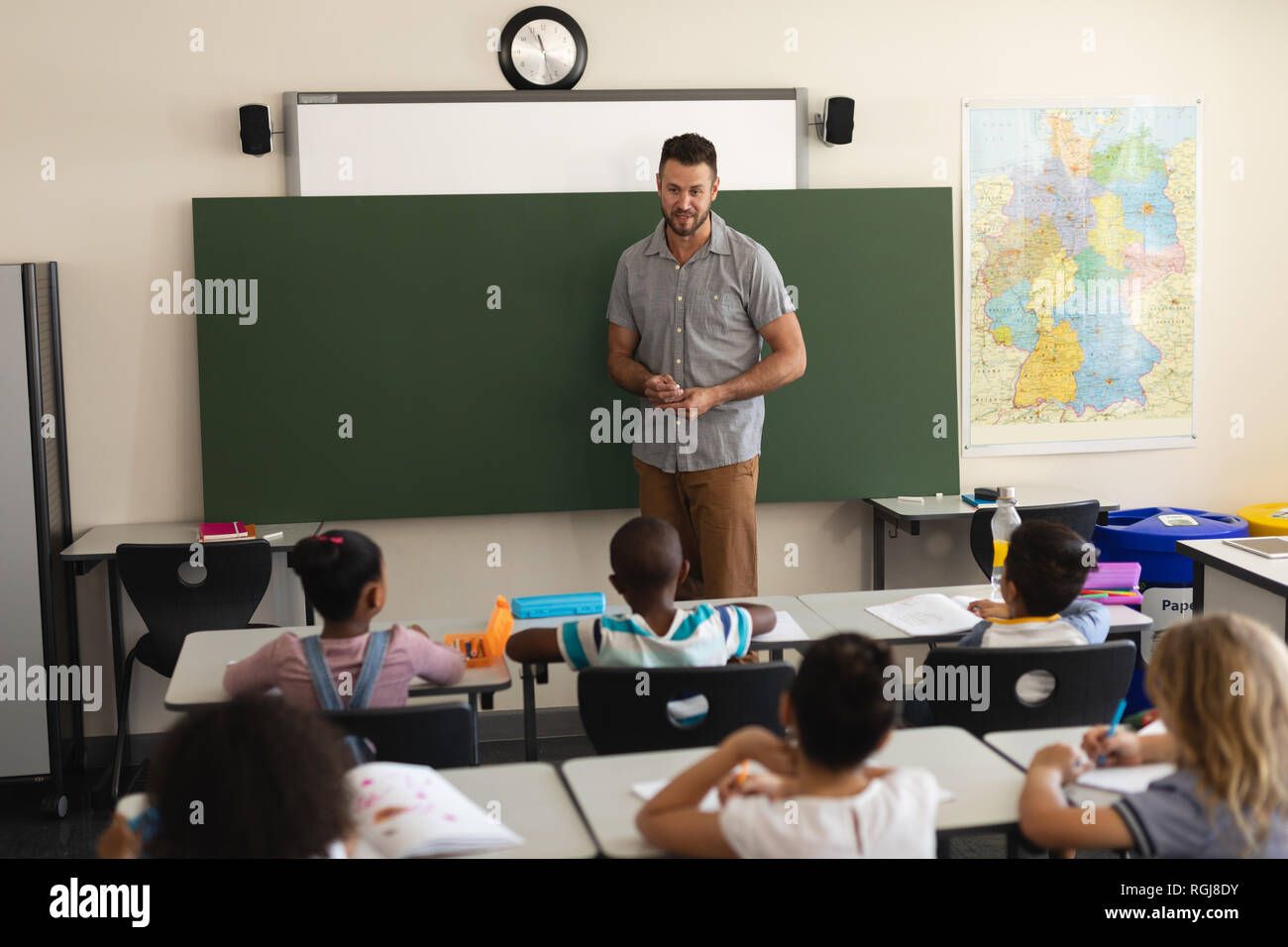Affordable Primary Science Tuition Singapore for All Learning Needs
Affordable Primary Science Tuition Singapore for All Learning Needs
Blog Article
A Comprehensive Guide to the Different Knowing Techniques in Primary Science Guideline
The expedition of diverse discovering approaches in key scientific research guideline presents a possibility for teachers to enhance pupil interaction and understanding dramatically. By taking a look at hands-on knowing strategies, inquiry-based techniques, and collaborative methods, we can identify reliable practices that deal with various finding out styles. Furthermore, the assimilation of technology and separated instruction plays an important duty in promoting an inclusive atmosphere. Nonetheless, the question continues to be: how can these techniques be effectively executed in the class to maximize their effect? The solution hinges on a closer examination of each approach and its implications for mentor scientific research.

Hands-On Learning Methods
Hands-on discovering strategies play a pivotal role in main scientific research guideline, involving trainees in energetic expedition and trial and error. These approaches permit students to connect straight with sensations and products, promoting a much deeper understanding of scientific principles. By utilizing manipulatives, versions, and real-life experiments, instructors develop a setting where pupils can observe, assume, and examine their concepts.
Such strategies not just boost understanding but also grow critical reasoning and analytic abilities. When pupils get involved in tasks like constructing basic equipments, growing seeds, or performing chain reactions, they are urged to ask inquiries and look for answers through their own monitorings. This experiential approach helps to demystify complex clinical concepts, making them more relatable and available.
Additionally, hands-on knowing promotes collaboration among peers, as pupils usually operate in teams to carry out experiments or share searchings for. This teamwork not only enriches their learning experience however likewise creates necessary social skills. Inevitably, integrating hands-on methods in primary scientific research instruction cultivates a lifelong love of understanding and interest concerning the natural globe, laying a strong foundation for future scholastic quests in scientific research and beyond.
Inquiry-Based Understanding
Inquiry-based knowing is an educational method that urges trainees to ask questions, investigate sensations, and build their own understanding of scientific concepts. This approach shifts the emphasis from standard teacher-led guideline to a more student-centered experience, where learners take the effort in their instructional journey. By fostering interest, inquiry-based discovering advertises much deeper engagement with the material, allowing students to check out topics in a purposeful context.
In technique, this strategy commonly includes hands-on experiments, observations, and important reasoning tasks that straighten very closely with the clinical approach. Pupils are urged to develop theories, style investigations, and evaluate data, which cultivates important skills such as analytical and analytic thinking. The duty of the instructor in this structure is to promote expedition, directing students through the inquiry procedure while motivating independent thought and collaboration.
Moreover, inquiry-based learning supports a sense of ownership over the learning procedure, inspiring trainees to pursue understanding actively. This approach not only enhances understanding of clinical ideas however also fosters a lifelong love for understanding, equipping pupils with the abilities required to navigate an increasingly intricate globe.
Collaborative Knowing Approaches
Collective understanding approaches equip pupils to take part in meaningful interactions with peers, promoting a common duty for their educational outcomes. In main scientific research guideline, these approaches encourage learners to work together to check out scientific ideas, fix troubles, and perform experiments (primary science tuition Singapore). By participating in group activities, students can take advantage of diverse point of views, enabling for richer understanding and retention of clinical understanding
One secret element of collective discovering is the focus on interaction skills. Students should verbalize their thoughts, listen proactively to others, and bargain concepts, every one of which are essential expertises in both scholastic and real-world contexts. This social interaction not only boosts their understanding of clinical principles but also advertises synergy and conflict resolution abilities.
Furthermore, collective understanding often results in boosted inspiration and involvement. They are more likely to take possession of their discovering journey when students see the worth of their contributions within a team. Teachers can promote this process by designing organized group jobs that straighten with educational program goals while giving assistance on effective cooperation techniques. On the whole, integrating collaborative discovering approaches in key science guideline cultivates a vibrant learning atmosphere that prepares pupils for future academic and social obstacles.
Modern Technology Integration in Science
The combination of modern technology in primary science direction boosts finding out experiences by providing ingenious devices and sources that sustain numerous teaching approaches, consisting of collaborative knowing - primary science tuition Singapore. Using digital platforms, simulations, and interactive applications allows students to engage deeply with scientific ideas, assisting in a much more hands-on approach to understanding
Digital research laboratories, for instance, enable students to perform experiments securely and successfully, advertising inquiry-based discovering. These devices can replicate real-world scientific scenarios, allowing trainees to visualize complex procedures that would certainly be tough to duplicate in a conventional classroom setting. Innovation fosters interaction and partnership among pupils, as they can share findings and work with each other on projects via on the internet platforms.
In addition, multimedia discussions and academic videos can enrich lessons by satisfying varied learning styles, making abstract concepts a lot more available. Information analysis devices likewise encourage pupils to collect and analyze scientific information, reinforcing critical believing skills. Generally, the strategic unification of technology in main scientific research direction not just enhances interaction but likewise prepares pupils for a technologically sophisticated culture, equipping official website them with crucial skills for future scientific undertakings.
Differentiated Direction Approaches
Distinguished direction approaches are vital for resolving the diverse needs of learners in main scientific research education and learning. These techniques allow instructors to customize their teaching methods to fit varying capabilities, passions, and learning styles within the classroom. By employing distinguished direction, instructors can produce a comprehensive setting that cultivates involvement and boosts understanding of clinical principles.
One effective strategy is to use flexible grouping, which allows pupils to team up with peers at comparable ability degrees or with varying point of views. This technique motivates peer discovering and promotes vital thinking. Additionally, providing choices in assignments can encourage pupils, enabling them to choose projects that reverberate with their passions while still satisfying curricular goals.
Additionally, integrating tiered assignments is an additional useful method. Deliberately jobs with differing levels of intricacy, teachers can ensure that all pupils are properly challenged, despite their efficiency. Using developmental evaluations to evaluate recognizing additional enables instructors to adjust their educational approaches dynamically, guaranteeing that each student gets the assistance they need.
Inevitably, executing set apart direction approaches in primary science education and learning not only boosts student discovering outcomes however additionally cultivates an enthusiasm for scientific research, preparing students for future academic searches.

Conclusion
In summary, effective primary science instruction requires a diverse technique that incorporates hands-on understanding, inquiry-based approaches, and joint news strategies. The assimilation of modern technology and differentiated instruction further caters to diverse discovering designs, promoting an atmosphere favorable to exploration and crucial thinking.
The expedition of varied discovering techniques in main science guideline offers a chance for teachers to enhance student involvement and understanding substantially.Hands-on knowing techniques play a pivotal duty in key science instruction, involving pupils in active exploration and trial and error.Inquiry-based understanding is an educational technique that encourages pupils to ask inquiries, check out phenomena, and construct their very own understanding of scientific principles.Collaborative learning strategies equip pupils to involve in meaningful communications with peers, fostering a common responsibility for their instructional results. In general, including collective learning techniques in primary science guideline see this website cultivates a vibrant knowing setting that prepares trainees for future scholastic and social challenges.
Report this page